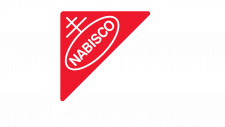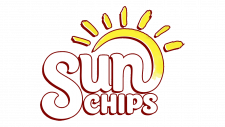Ruffles Logo
Ruffles potato chips are one of those childhood memories that people carry with them even after they’ve grown up. Ruffles has only changed two things since its beginnings: the depth of its ridges and the number of flavors available. Sour Cream & Onion, Cheddar & Sour Cream, Flamin’ Hot, Original, and Lime & Jalapeno are some of the favorite flavors.
Meaning and History
Bernhardt Stahmer filed for a patent on sliced, corrugated potato products in 1955. The founder stated that the potatoes tasted like cheese, despite the fact that no such flavor was added. It wasn’t long before Stahmer’s innovative chips piqued the interest of aspiring chip tycoon Charles Elmer Doolin and his Frito Company. He bought the trademark in 1958. Over the years, Ruffles established itself as a popular choice among chip eaters.
What is Ruffles?
Ruffles are thin, ridged pieces of potato that are seasoned after being fried till crisp. They have been available in hundreds of unique and innovative varieties since their beginnings. Ruffles chips have long been a popular snack at picnics, family reunions, and corporate events.
1974 – 1986
The original logo features only the brand name. It appears to be handwritten as the strokes have uneven edges and the letters are not perfect. In fact, the whole name is not printed in one straight line. Such character placement creates a friendly and fun atmosphere. The bold red color strikes with its daring liveliness and energy. There is no need for any other elements.
1986 – 1995
The inscription has been slightly tweaked but otherwise stayed the same. The designer removed the bracketed slab serifs seen earlier. The strokes got straighter. They are cut straight instead of having rounded elements. This logo is a fine-tuned original version rather than rebranding.
1995 – 1997
The company further played with the logo design. One of the most noticeable updates was the shortening of the inscription’s height. However, no major changes were made.
1997 – 2003
It was during the late 90s that the company made more dramatic updates to its visual identity. First of all, it introduced a blue color in the form of a shadow. This color palette is actually used by PepsiCo itself and several other brands it owns. The name is placed on a white base with a blue outline that creates a three-dimensional effect.
2003 – 2015
An edgy, three-dimensional logo was presented at the beginning of the new century. The design surely appealed to a younger generation. Meanwhile, the use of a familiar font allowed keeping the older generation that has been loyal to the brand for years. In addition, a white and blue outline serves as the foundation for the design.
2015 – 2022
In 2015, the company introduced a geometric font. It presented the brand from a slightly different angle and attracted even more attention to the brand. It is well-designed thanks to shadows, gradients, and a dramatic white base. The design looks modern, confident, and bold.
2022 – Today
Although the previous design stayed with the brand for seven years, the company brought back the old memories. It was a good move to show the consumer that it is a reliable and loyal company with a history. The designers, though, kept the geometric font to show that despite staying true to its values, it takes into consideration contemporary preferences.
Font and Color
Since its inception, the brand has employed vibrant tones of red as its primary color. The color red represents the brand’s passion for its product as well as its recognition among consumers. The color is also believed to stimulate hunger and is widely employed in the food sector. Since 1997, the company has also incorporated a blue shadow, which adds a sense of trustworthiness and calmness.
The original version features a handwritten font. Later, the rounded stroke ends were cut straight and the serifs were removed. The font has been adjusted more and finally acquired a clean and refined appearance. The designer also created a three-dimensional appearance and added a shadow. The latest logo and its earlier version feature a geometric font with serifs, similar to the Manisha font by Kelik.



















